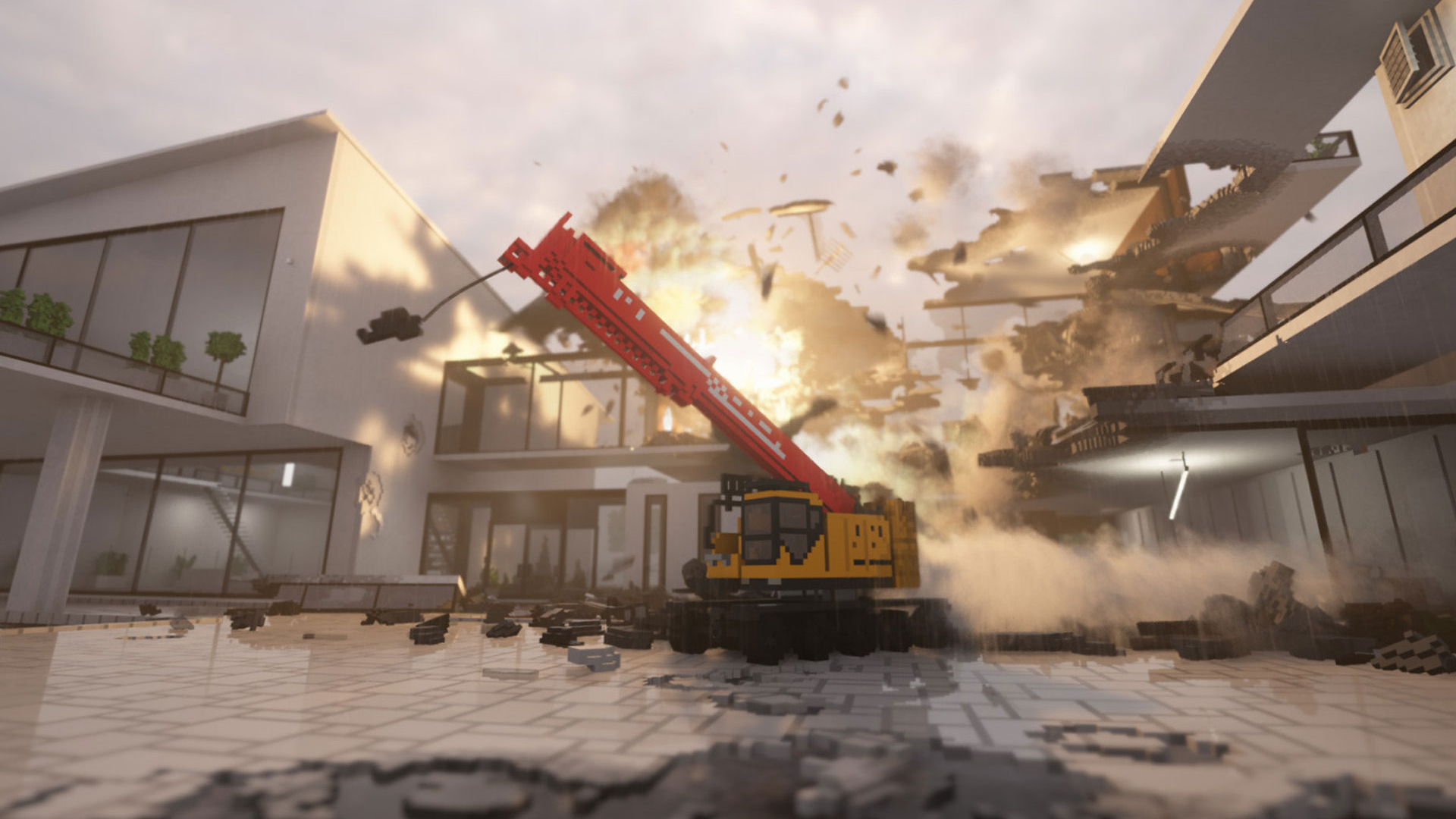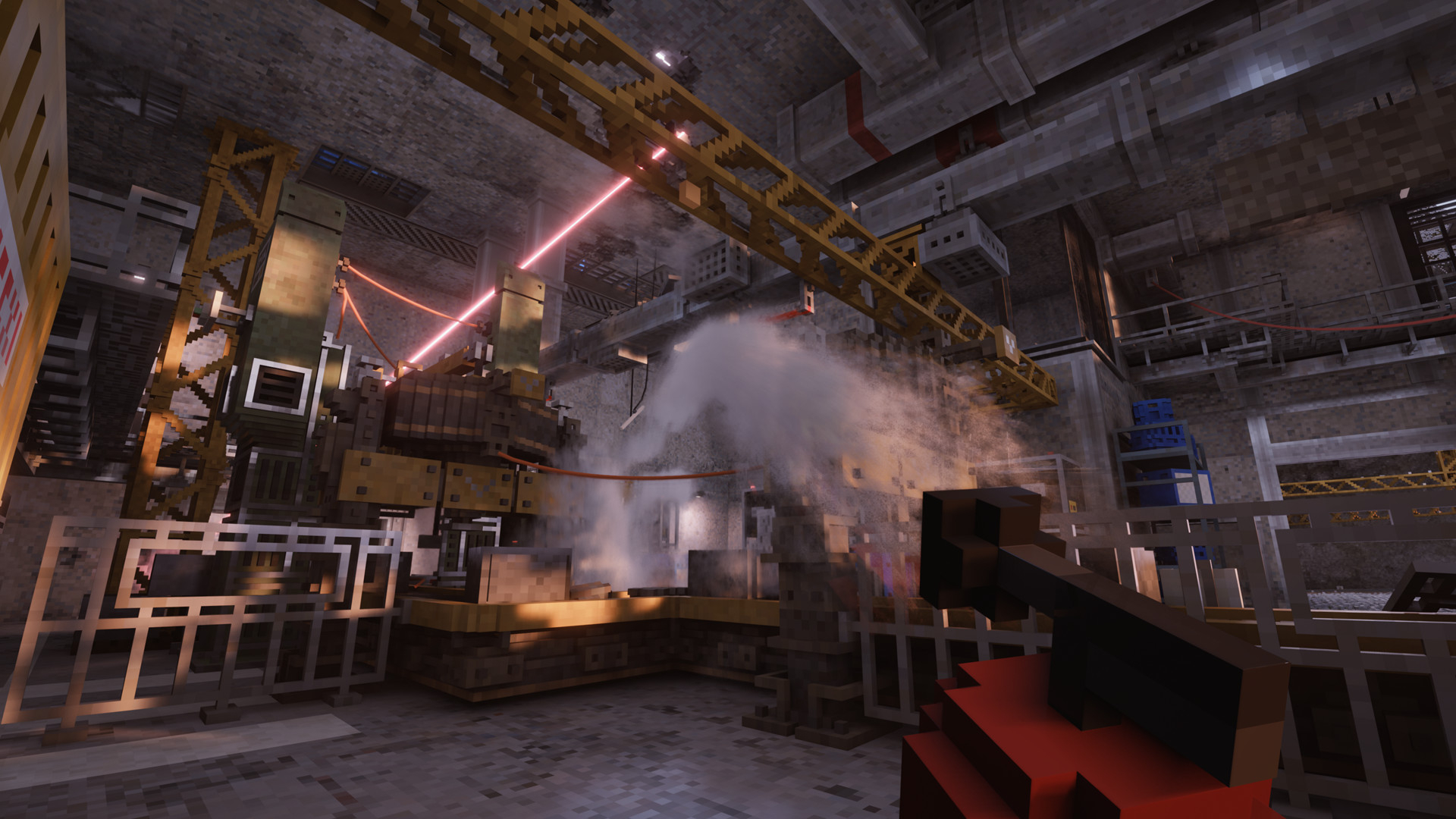Forget about ray tracing – physics is how gaming will take its next big leap forward
The next level

The message has been pretty consistent for the last six years now: ray tracing is the next big frontier for gaming. A revolutionary way of lighting 3D environments that had previously only been possible via offline renders at Hollywood effects studios, this fancy new ray tracing thing that modern graphics cards can do would bridge the gap between movie-level CG and the real-time graphics happening before our astonished eyes on our monitors. And let’s not dismiss ray tracing – but it’s burying the lede in 3D tech.
It makes water look nicer. It can bring old games back to life in a truly thrilling way – as Quake II and Portal’s RTX treatments have amply demonstrated. But it doesn’t actually change the way we play games. Unless you count stopping to gawp at every reflective puddle as a seismic shift in our relationship with interactive media.
The really exciting horizon for innovation is in real-time physics.
Teardown makes that case brilliantly. A destruction sandbox as we’ve never seen before, it’s arrived not from the grand, gilded archway of a triple-A development studio but from an indie studio. Its first release, no less.
In Teardown, you take jobs that pop into your email inbox; nefarious jobs, involving pinching something that’s closely guarded or doing tremendous damage to something. You drive to the destination in your car, carrying one or two tools or weapons, and then you just… raise voxel hell.
Voxel pop

Had this premise been under the stewardship of, let’s say Ubisoft Montreal, or even Naughty Dog, two masterful studios that tell stories and weave experiences as well as anyone ever has, it wouldn’t be anything like as exciting as Teardown. You’d approach your objective, talking to a sidekick, enjoying the rich character development and witty dialogue, and then you’d press ‘interact’ on the thing you needed to steal/destroy/explode. And it’d either trigger a cutscene or you’d watch that event play out in-engine. Either way, it’s an experience you’ve had many times before.
The thrill of Teardown is that the voxels are flying about completely at your behest. Everything is destructible, the vehicle you’re driving into the level, every single building, road, garden and streetlamp. “I could just… drive this truck clean through the wall and steal the McGuffin that way”, you say to yourself in a moment of giddy revelation. So you do, and it feels just as magnificent as you’d hoped.
Sign up for breaking news, reviews, opinion, top tech deals, and more.
Developer Tuxedo Labs knows that it doesn’t need to inject any story into Teardown. You’re telling the story every time you and the hugely impressive physics engine interact. The heist on the dock? I swam out to a huge tugboat and careened it straight into the pier. Art theft? I made an elaborate network of walkways out of copper pipes running along the walls and balconies, circumventing the pressure-sensitive alarm pads.
I’ve done these kinds of heists before, you understand. We all have. In Payday, Gunpoint, Monaco, and GTA 5… but Teardown’s levels feel totally fresh and exhilarating because of the physics underpinning it all.
Drippy tech

Okay, now watch this video about real-time water physics simulation. I’ve become a bit obsessed with The Cutting Edge on YouTube, an excellent channel that charts advances in-game physics. You should subscribe to it.
That video shows that new techniques, specifically fast fluid simulations with sparse volumes on the GPU, can render eerily realistic splashing and sploshing in real time. The real-time simulations run at about 5-7FPS in the examples The Cutting Edge shows, aka the fastest I’ve ever managed to run Crysis. But in all seriousness – that’s not far off a feasible in-game implementation. In a couple of GPU generations, water physics like you’re looking at in that video might be happening in your games.
And ray tracing be damned, that realistic water could change everything. Because like Teardown’s incredibly destructible voxels, it offers you a way to interact with virtual worlds in a way technology simply hasn’t been able to previously.
Hand on heart – if Skull and Bones released tomorrow and it was nothing more than Assassin’s Creed 4: Black Flag’s naval combat but on incredibly realistic seas, would you be disappointed? Imagine being able to generate a wave that might capsize a smaller vessel in an unscripted manner or watching a huge galleon break apart under its own waterlogged weight. It’d be transformative. As the video points out – what if a BioShock game had water that realistic?
There’s a trend running through The Cutting Edge’s videos: the hugely impressive cloth, water, bread-tearing, and destructible scenery are all nearly feasible in real-time rendering. Recent GPU advances and optimized render pipelines have put us on the precipice of a new kind of videogame, one in which everything doesn’t just look realistic but behaves that way too. What might that mean for VR gaming, where the tactile element of the experience is paramount? Let’s not completely lose the run on ourselves here, but could such a breakthrough even tempt Valve into reviving that series? It was a breakthrough in real-time physics that persuaded them last time, after all.
Ray tracing has its place in all of this. Teardown uses it all over the place to make those flying voxels look even more immersive and satisfying – without that tech, Tuxedo Labs may not have been inclined to make the game. Good visuals still sell games, just as they did at any previous moment in the games industry. But a lighting technique can’t change how we interact in-game.
Physics can, and it feels like a big step forward is about to happen.

Ad creative by day, wandering mystic of 90s gaming folklore by moonlight, freelance contributor Phil started writing about games during the late Byzantine Empire era. Since then he’s picked up bylines for The Guardian, Rolling Stone, IGN, USA Today, Eurogamer, PC Gamer, VG247, Edge, Gazetta Dello Sport, Computerbild, Rock Paper Shotgun, Official PlayStation Magazine, Official Xbox Magaine, CVG, Games Master, TrustedReviews, Green Man Gaming, and a few others but he doesn’t want to bore you with too many. Won a GMA once.